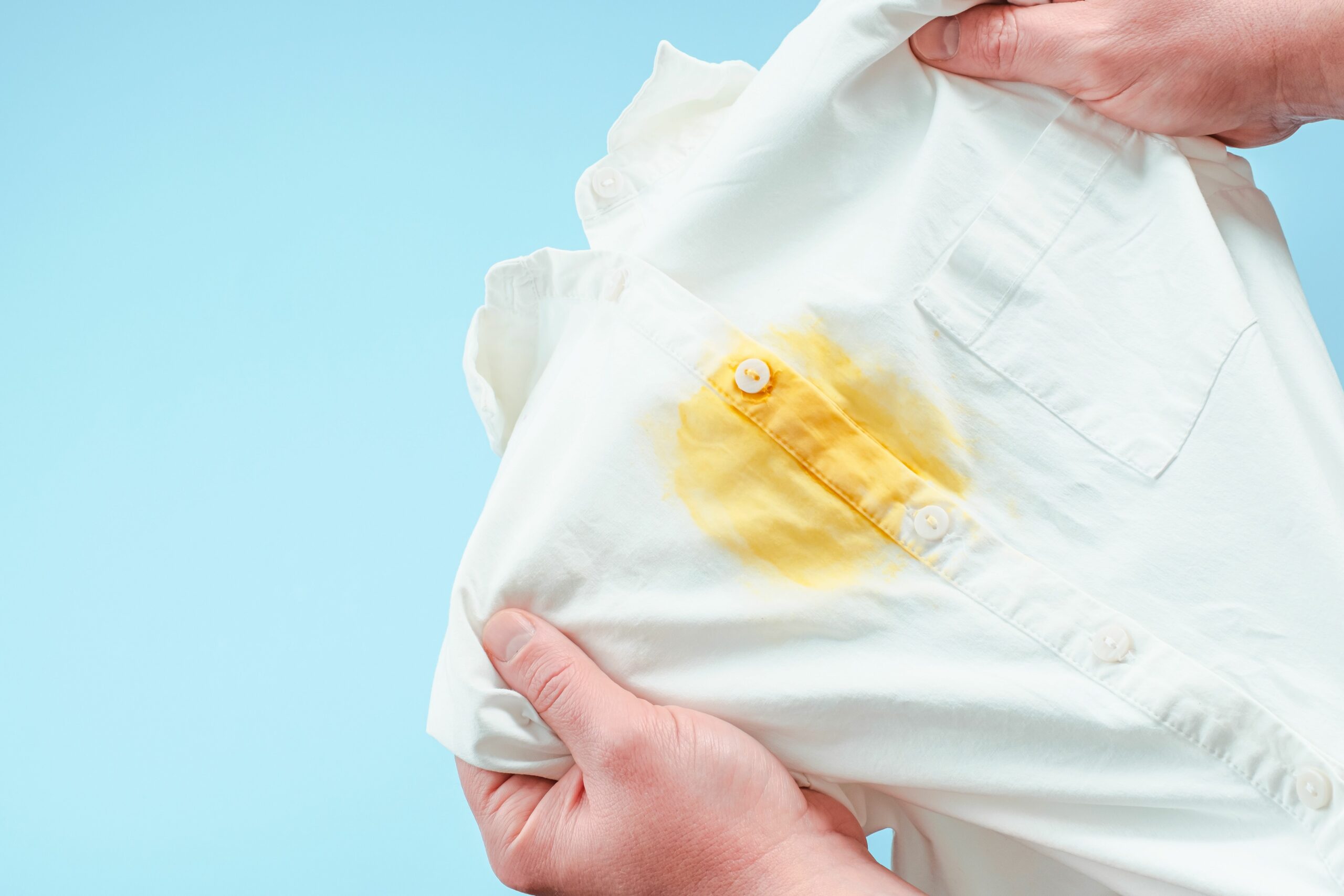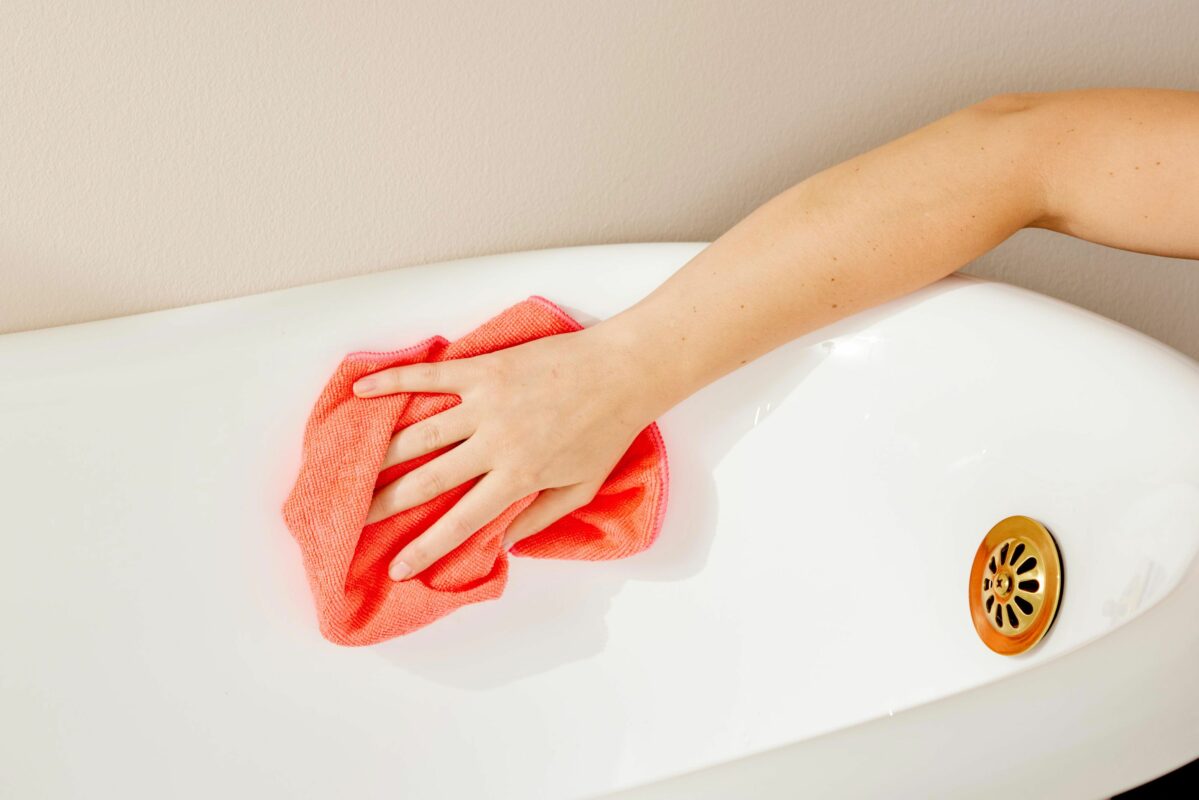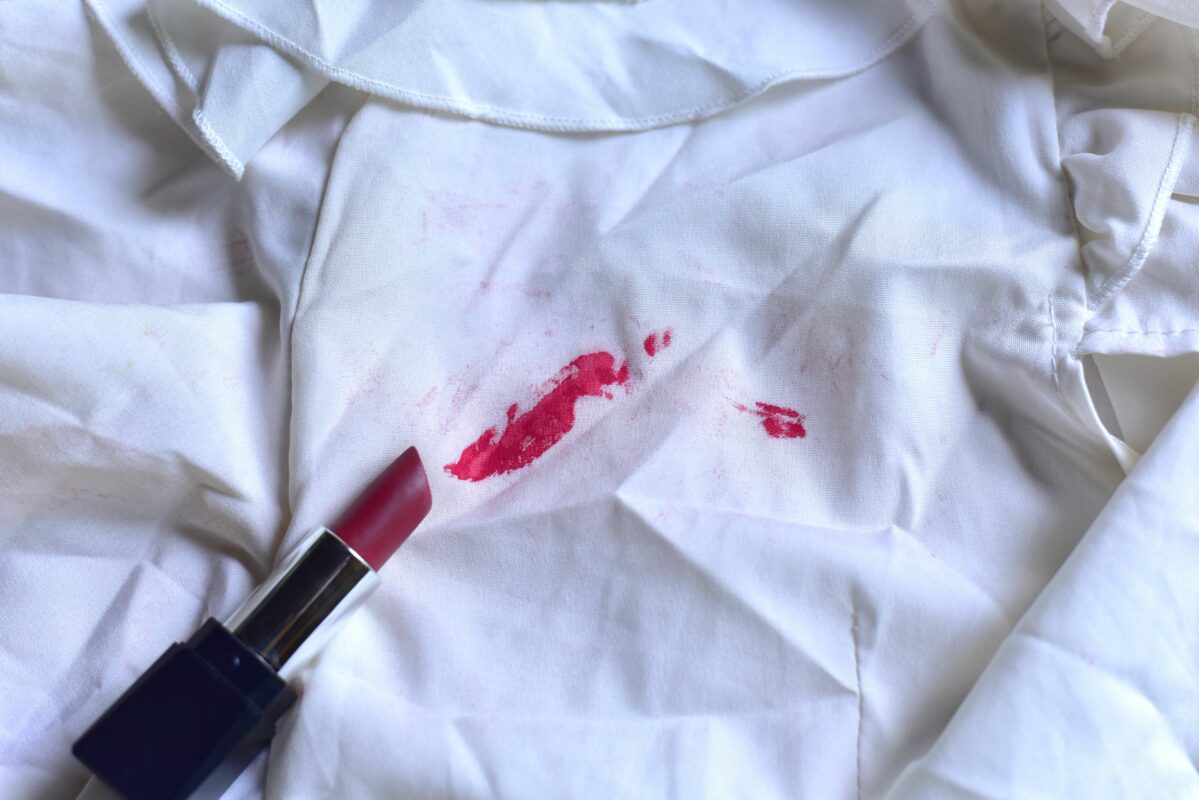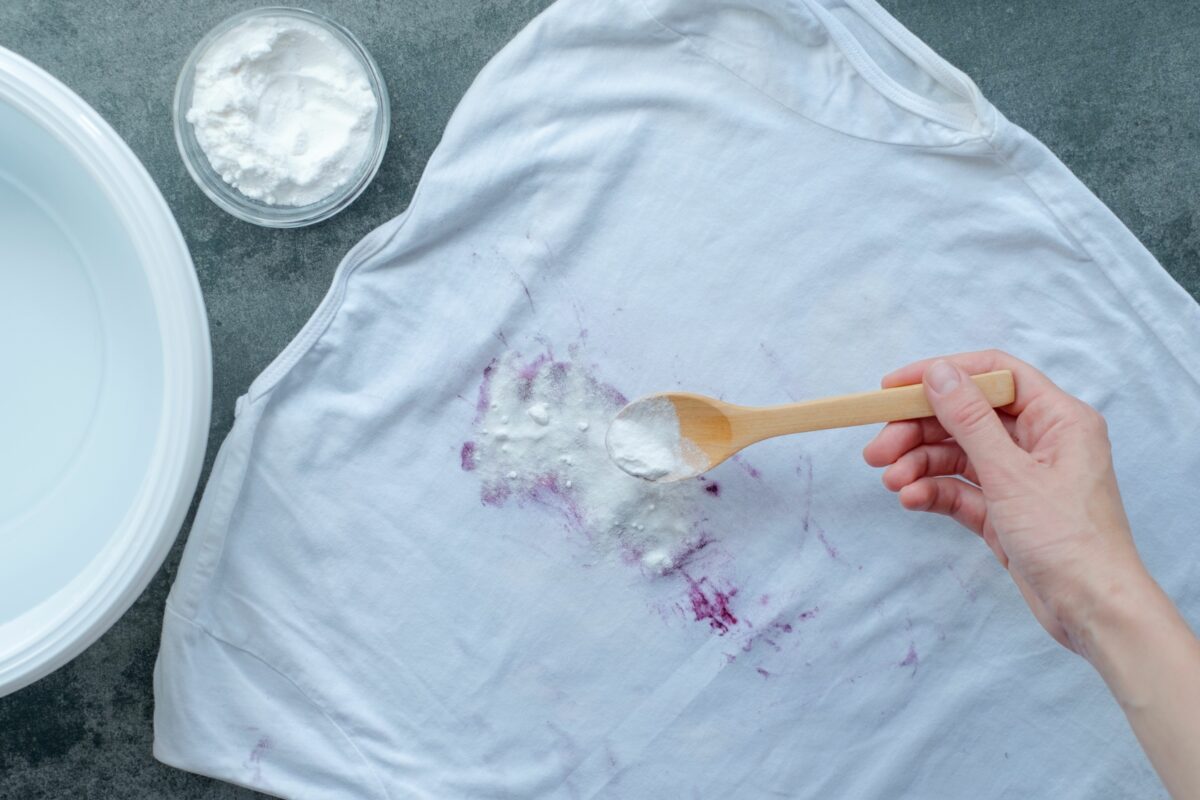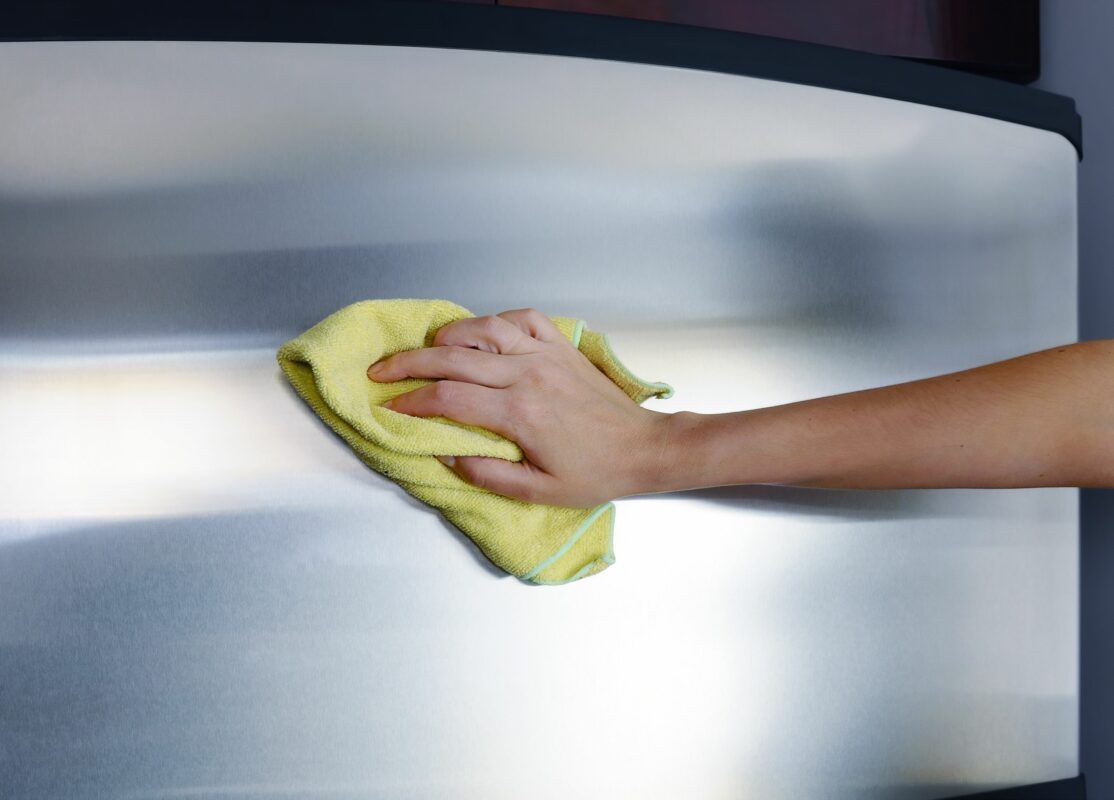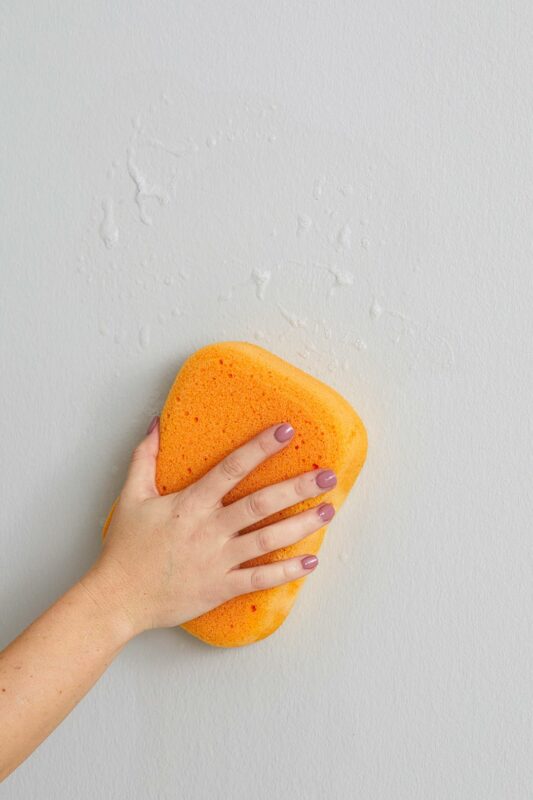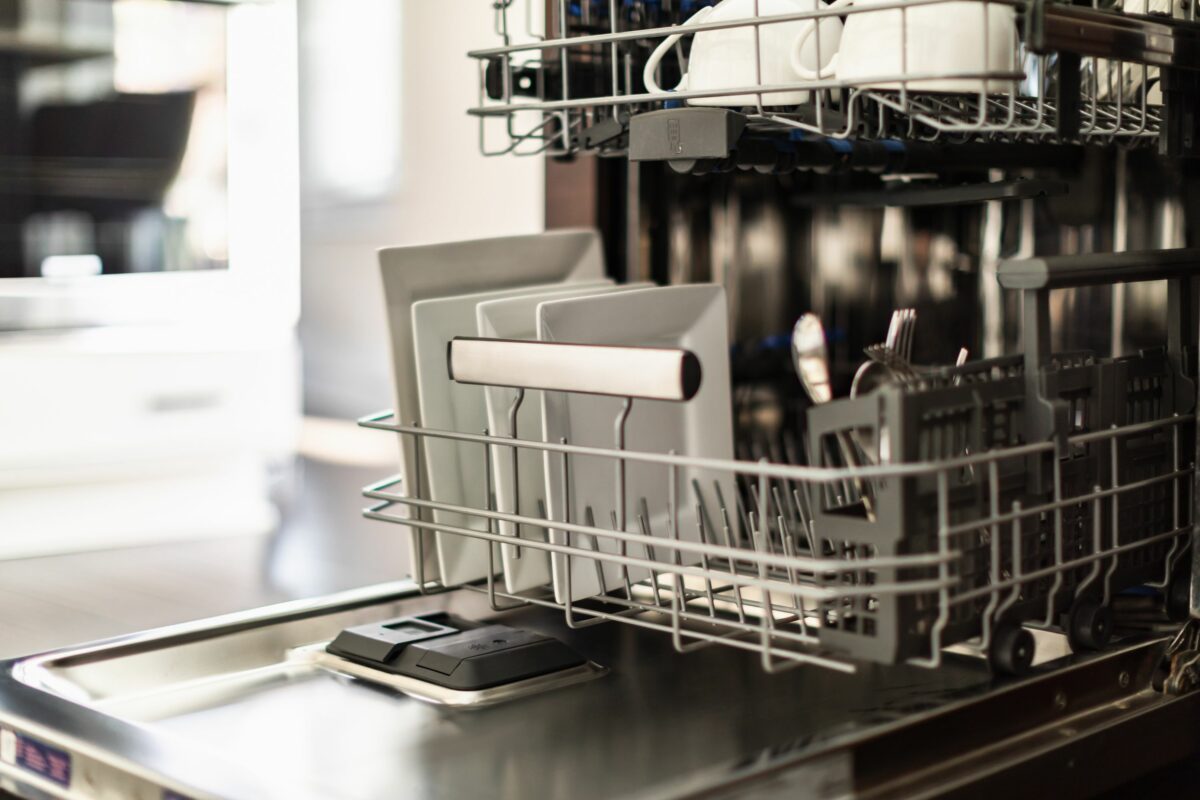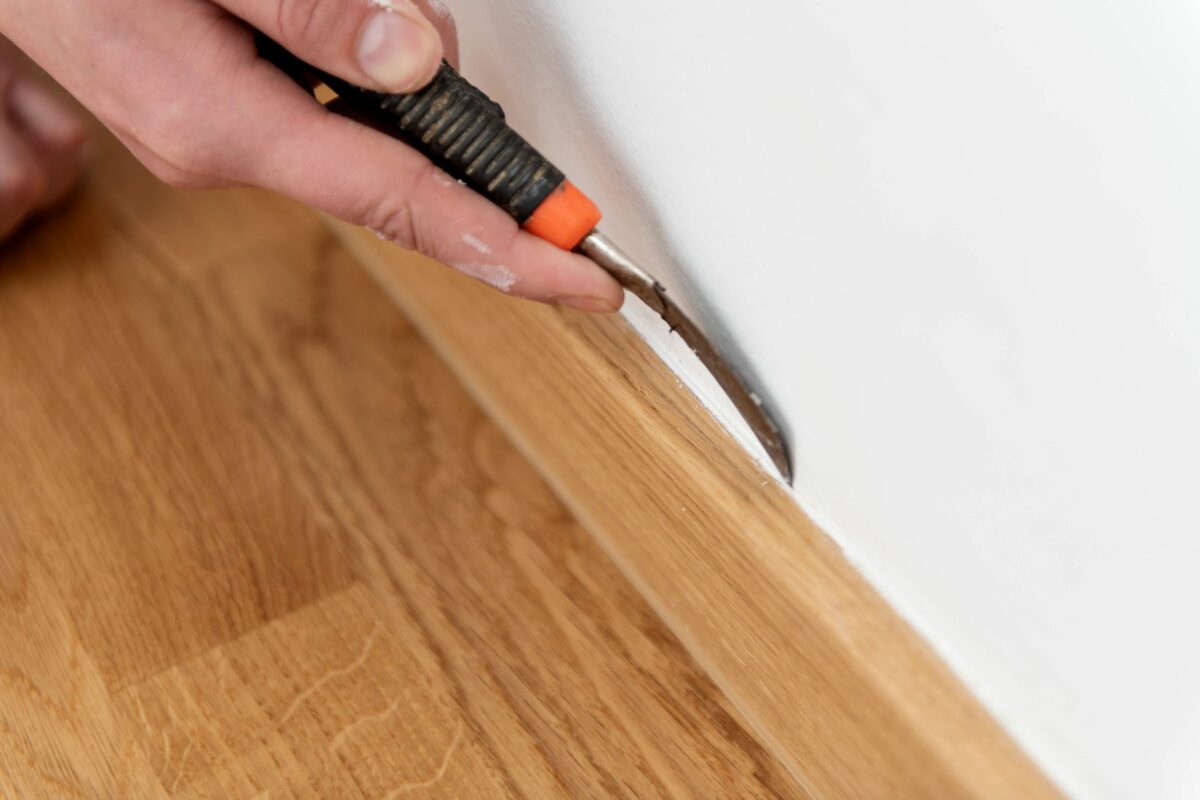You might love mustard on your hot dogs and hamburgers but not so much when a blob of the bright yellow condiment lands on your pants, dining room chair, or living room carpet. Mustard has a reputation for being an especially tricky stain to remove. This is in part due to turmeric, which lends the condiment its bright yellow hue.
Here, you’ll find instructions for removing fresh mustard stains and dried, deeply set-in mustard stains from clothing and other washable fabrics, as well as from carpet and upholstery.
How to Remove a Fresh Mustard Stain from Clothes and Washable Fabrics
1. Scrape the Excess Mustard
If the stain is fresh, use a butter knife or the side of a spoon to lift as much excess mustard as possible from the fabric. Avoid using napkins or paper towels to remove the mustard, as wiping can cause it to spread, making a bigger mess. If the mustard has dried, use a butter knife or the side of a spoon to gently scrape it up and off the fabric.
2. Flush with Cold Water
Hold the fabric taut under cold running water with the stain facing down. Allow the force of the running water to push the mustard off and away from the fabric.
3. Pretreat the Stain if Necessary
Mustard stains that have not yet dried may come out with only the force of cold running water. If most of the stain comes out with water, apply a small amount of dish soap (hand soap also works in a pinch) and rub the stained fabric against itself before flushing it again with water.
A mustard stain that has dried or that doesn’t come out immediately must be treated using a stain remover. Here are some options, all of which are effective:
- Dish soap
- Liquid laundry detergent
- Commercial stain removers
- Rubbing alcohol
Apply whichever stain remover you choose, and allow it to penetrate the stain for 20 minutes before laundering the item.
4. Launder in Cold Water
Launder the item as usual, using the cold water setting. Follow any additional special handling instructions provided on the care tag.
5. Check the Stain Before Drying
Check the item after it has been washed. If the stain is gone, it can be dried, but if the stain remains, don’t put the item in the dryer. Heat can set the stain, making it difficult, if not impossible, to remove. If the stain persists after washing, repeat the process or use one of the following methods—oxygen bleach or bluing—to eliminate set-in mustard stains from washable fabrics.
How to Remove a Set-in Mustard Stain with Oxygen Bleach
1. Scrape the Excess Mustard
Use a butter knife or the side of a spoon to gently scrape the dried mustard up and off the fabric.
2. Prepare the Oxygen Bleach Solution
Dilute powdered oxygen bleach in hot water in a space large enough to submerge the stained item where it can sit, undisturbed, for an hour up to overnight. Follow the manufacturer’s guidelines and the package instructions for diluting the oxygen bleach.
3. Soak the Stained Item
Submerge the mustard-stained item in the oxygen bleach solution, using your hands to agitate it to ensure the solution thoroughly penetrates the fibers. Wash your hands well or wear protective gloves to prevent skin irritation from contact with the stain-removing solution. Soak the item for an hour up to overnight.
4. Launder in Cold Water
After soaking, remove the item from the oxygen bleach solution and gently squeeze out the excess water. Then, launder the item in cold water, following any special handling instructions on its care tag.
5. Check the Stain Before Drying
Check the item after it has been washed. If the stain is gone, it can be dried, but if the stain remains, don’t put the item in the dryer, as the heat can set the stain.
How to Remove a Set-in Mustard Stain with Laundry Bluing
Laundry bluing is an older laundry product typically used to eliminate yellowing and dinginess in white fabrics. It works by imparting a slight blue tint that counteracts yellowing, making the fabric appear bright white to the eye. It can treat set-in stains from mustard by reducing the appearance of yellow splotches.
Bluing comes in liquid and bar form. Liquid bluing is added to the wash, usually during the rinse cycle, while bluing bars are used to pretreat stains prior to laundering. To use liquid bluing, follow package instructions, as the instructions vary significantly from brand to brand. To use a bluing bar to pretreat stains, start by wetting the bar. Then, rub it directly onto the mustard stain. After applying the bluing to pretreat the stain, launder the item as usual.
How to Remove Mustard Stains on Carpet and Upholstery That Can Be Cleaned with Water
Before cleaning carpet or upholstery, it is important to check the care tag for instructions. This is especially true of furniture, as many upholstery fabrics cannot be safely treated with water or water-based cleaning solutions. A universal upholstery cleaning code or legend appears on most furniture care tags as letter symbols. Here’s what the letters are and what they mean:
- W = Wet/water cleaning only
- S = Dry solvent cleaning only
- SW = Dry solvent and/or wet cleaning
- X = Professional cleaning or vacuuming only
If there are other special care instructions, they are also included on the care tag. Before trying any cleaning techniques, perform a spot test on an inconspicuous area to ensure the products won’t damage the fabric.
1. Scrape the Excess Mustard
If the stain is fresh, use a butter knife or the side of a spoon to lift as much excess mustard as possible from the carpet or upholstery. Avoid using napkins or paper towels to remove the mustard, as wiping can cause it to spread, making a bigger mess. If the mustard has dried, use a butter knife or the side of a spoon to gently scrape it up and off the fabric.
2. Dab with Cold Water
If the carpet or upholstery can be cleaned with water or water-based agents, wet a white cloth, squeeze it out so that it is damp but not dripping wet, and dab at the mustard stain. Be sparing in your use of water, as introducing too much liquid can flood the stain, causing it to spread.
3. Apply Stain Remover
Apply a stain remover, such as dish soap, liquid laundry detergent, a commercial stain remover that is safe for the fabric, or rubbing alcohol, to the mustard stain. Allow the stain remover to penetrate the stain for 20 minutes.
4. Blot with a White Cloth
Blot the stain with a damp white cloth, rinsing and wringing it out as you work. Repeat this process until the stain is gone.
5. Rinse the Stain Remover
Rinse the white cloth well, wringing out excess water, and gently wipe the area to remove all the stain remover. This step is important because residue from the stain remover can oxidize over time, leaving a stain of its own.
6. Blot the Area Dry
Use a clean white towel to blot the area dry. Doing so speeds up drying time and prevents water rings from leaving stains. Then, allow the furniture or carpet to air dry completely before sitting or walking on it.
7. Use a Carpet and Upholstery Cleaning Machine (Optional)
If the mustard stain remains after the spot treatment, use a carpet and upholstery cleaning machine to deep clean the fabric. Follow manufacturer instructions, and allow 12 to 24 hours of drying time before walking or sitting on carpet or upholstered furniture cleaned with a machine.
How to Remove Mustard Stains on Carpet and Upholstery That Can’t Be Cleaned with Water
To remove a mustard stain from carpet or upholstery that cannot be cleaned with water, use a solvent (for S-code fabrics) or call in a professional cleaner (for X-code fabrics).
S-code fabrics can be cleaned at home using a solvent-based stain remover such as K2r Spotlifter. Start by scraping the mustard off the fabric with a butter knife or the side of a spoon. Then, follow package instructions for usage guidelines, and test the product on an inconspicuous area to ensure it will not damage the fabric.


